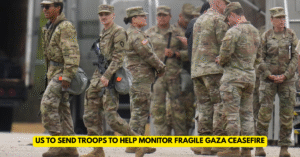Washington — In a move that signals renewed ambition in U.S. foreign policy, President Donald Trump has floated plans to reestablish U.S. troops at Bagram Air Base in Afghanistan. Once the central hub for America’s two-decade-long operations in the country, the base was handed over to Afghan and Taliban control in the chaotic U.S. withdrawal of 2021.
During a press conference while on a state visit to the UK, Trump described the return to Bagram as “trying to get it back,” underscoring not just military utility but the symbolic weight the base carries. He cited its proximity to China — reportedly “an hour away” from where China supposedly develops its nuclear weapons — as a reason why Bagram was too strategically valuable to abandon. He also criticised the previous administration’s exit as a “total disaster,” saying Bagram should never have been given up.
Trump hinted that there may be room for negotiation with the Taliban. He suggested that the Afghan authorities might be more receptive now, given their international diplomatic and economic pressures. Still, the President stopped short of confirming concrete plans or a timeline.
Experts warn that reclaiming Bagram is not a simple task. The logistics alone — securing the massive facility, repairing infrastructure, ensuring supply lines, deploying enough troops to defend it — are daunting. Some U.S. officials caution that returning to Bagram could amount to a de facto re-invasion rather than a small supportive presence. There are also threats from militant groups inside Afghanistan that could pose serious security risks.
The move reflects a broader recalibration: America’s growing focus on countering China’s rise and reasserting its influence in Central Asia. But it comes with trade-offs — fears of destabilizing the region, reigniting anti-American sentiment, and remaking the Afghan conflict in ways that may be costly and long-lasting.
For now, much remains unclear. Details on diplomatic discussions with the Taliban, funding, troop levels, or how this fits into wider regional strategy are still emerging. What is certain is that the potential return marks a sharp departure from purely withdrawal rhetoric and suggests the U.S. might be ready to re-enter Afghanistan in a new role — one fraught with both geopolitical weight and human consequence.








